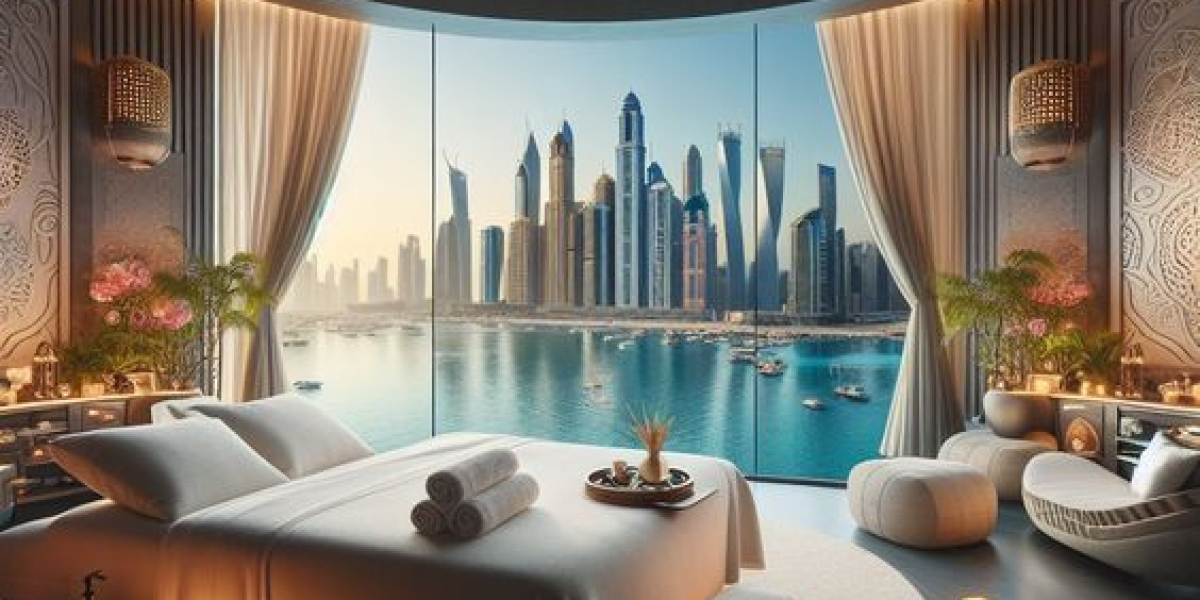The Timeless Art of Arabic Massage: A Journey into Middle Eastern Wellness
The Arabic massage, rooted in ancient Middle Eastern healing traditions, is an immersive wellness experience that combines relaxation, cultural heritage, and physical rejuvenation. In regions such as Dubai and other parts of the Middle East, the Arabic massage is widely available in luxury spas and wellness centers. Known for its use of traditional oils, rhythmic techniques, and a soothing ambiance, this massage provides a unique blend of relaxation and therapeutic benefits.
Origins and Cultural Significance of Arabic Massage
Arabic massage is influenced by centuries-old practices across the Middle East and North Africa. It draws inspiration from ancient wellness techniques, including the use of warm oils, herbal compresses, and aromatherapy, which are believed to aid in restoring the body's balance and releasing tension. These massages are often accompanied by Arabian scents like oud, jasmine, and sandalwood, creating a sensory experience that goes beyond physical relaxation to connect individuals with the region’s rich cultural heritage.
Key Elements of an Arabic Massage
Arabic massage is distinctive for its focus on gentle but firm techniques, therapeutic oils, and the inclusion of a hammam (steam bath) in many cases. Here are the core components of an Arabic massage experience:
Warm, Scented Oils: Essential oils play a crucial role in Arabic massage, with popular choices like oud, frankincense, and myrrh. These oils are not only relaxing but also have therapeutic qualities, such as reducing muscle pain, improving blood circulation, and soothing the skin.
Rhythmic and Gentle Pressure: The massage involves steady, rhythmic movements that follow the natural flow of the body’s energy centers. The therapist applies pressure to specific points, relieving muscular tension while enhancing mental calm.
Full-Body Experience: Arabic massage typically addresses the entire body, from the feet to the shoulders, neck, and head. This comprehensive approach targets tension zones, improves circulation, and helps balance energy throughout the body.
Stretching Techniques: In addition to massage strokes, Arabic massage may include gentle stretching, which enhances flexibility, reduces stiffness, and promotes joint mobility.
Optional Hammam Ritual: Some Arabic massages start or end with a hammam ritual, a traditional Middle Eastern steam bath. This ritual opens the pores, relaxes muscles, and prepares the skin to absorb the massage oils fully.
Benefits of Arabic Massage
An Arabic massage offers both physical and mental benefits, making it an ideal choice for those seeking relaxation, muscle relief, and a sensory journey. Here’s a closer look at some of its main advantages:
Relieves Stress and Anxiety: The use of warm, aromatic oils and calming massage strokes creates a deeply soothing experience. The sensory elements of Arabic massage help reduce stress and anxiety, allowing individuals to enter a state of complete relaxation.
Improves Blood Circulation: The long, flowing massage strokes stimulate circulation, helping deliver oxygen and nutrients to the muscles and tissues. This can relieve pain, reduce muscle soreness, and improve overall energy levels.
Promotes Detoxification: The gentle pressure and kneading techniques in Arabic massage activate the lymphatic system, supporting the body’s natural detoxification process. This leaves individuals feeling lighter and refreshed.
Eases Muscle Tension: The rhythmic movements and deep pressure applied in Arabic massage are ideal for alleviating muscle pain, particularly in the back, neck, and shoulders. This makes it a popular choice for those with muscle stiffness or chronic pain.
Enhances Skin Health: The oils used in Arabic massage, often enriched with antioxidants and moisturizing agents, help nourish and soften the skin, leaving it feeling smooth and radiant.
Arabic Massage vs. Other Types of Massage
While there are similarities between Arabic massage and other massage types, such as Swedish or aromatherapy massage, Arabic massage has unique characteristics:
Aromatherapy Focus: Unlike typical Swedish massage, Arabic massage incorporates fragrant essential oils unique to Middle Eastern culture, such as oud and rose, for a relaxing and aromatic experience.
Gentle Rhythmic Pressure: Unlike deep tissue massage, Arabic massage relies on gentler pressure and rhythmic strokes, making it ideal for those seeking a calming experience rather than an intense muscle workout.
Cultural Rituals: Arabic massage often includes elements of Middle Eastern traditions, like hammam baths and herbal compresses, giving it a unique cultural significance.
Where to Experience Arabic Massage
Luxury spas across the Middle East, particularly in cities like Dubai, Abu Dhabi, and Riyadh, offer authentic Arabic massage experiences. In Dubai, several spas provide Arabic massage treatments in beautifully designed spaces that reflect the region’s rich culture. Some popular choices include:
Talise Ottoman Spa at Jumeirah Zabeel Saray: Known for its opulent Ottoman-inspired interiors, this spa offers a variety of Arabic massages in an ambiance reminiscent of ancient Arabian palaces.
The Spa at One&Only Royal Mirage: This spa provides Arabic massage treatments using traditional oils and methods, paired with a serene atmosphere for total relaxation.
The Spa at Address Boulevard: Located in the heart of Dubai, this spa offers a blend of Middle Eastern-inspired treatments, including authentic Arabic massage.
Tips for Enjoying an Arabic Massage
To make the most of your Arabic massage experience, consider these tips:
Arrive Early: Many spas offer access to steam rooms or hammams before your treatment, which can help relax muscles and prepare your skin for the oils.
Stay Hydrated: Both the steam room and the massage can be dehydrating, so drink plenty of water before and after your session.
Communicate Preferences: Let your therapist know if you have any specific areas of tension or if you prefer more or less pressure. Arabic massage is typically gentle, but it can be tailored to suit your comfort.
Dress Comfortably: Wear loose, comfortable clothing afterward to maintain the relaxed feeling and avoid irritation on newly softened skin.
Embracing Wellness through Arabic Massage
The Arabic massage is more than a physical treatment; it’s a celebration of Middle Eastern culture and ancient healing techniques. By combining therapeutic touch with traditional oils, rhythmic movements, and often the addition of a hammam ritual, it offers a multi-sensory journey that promotes wellness, relaxation, and inner peace. Whether you’re a resident or a visitor, indulging in this timeless ritual is an opportunity to reconnect with both mind and body, embracing a profound sense of well-being.









